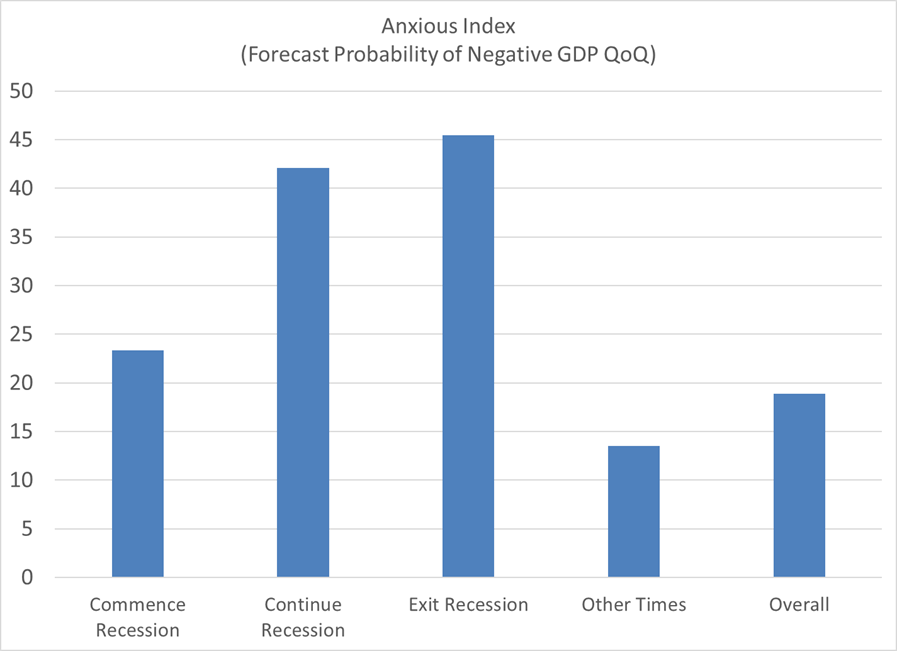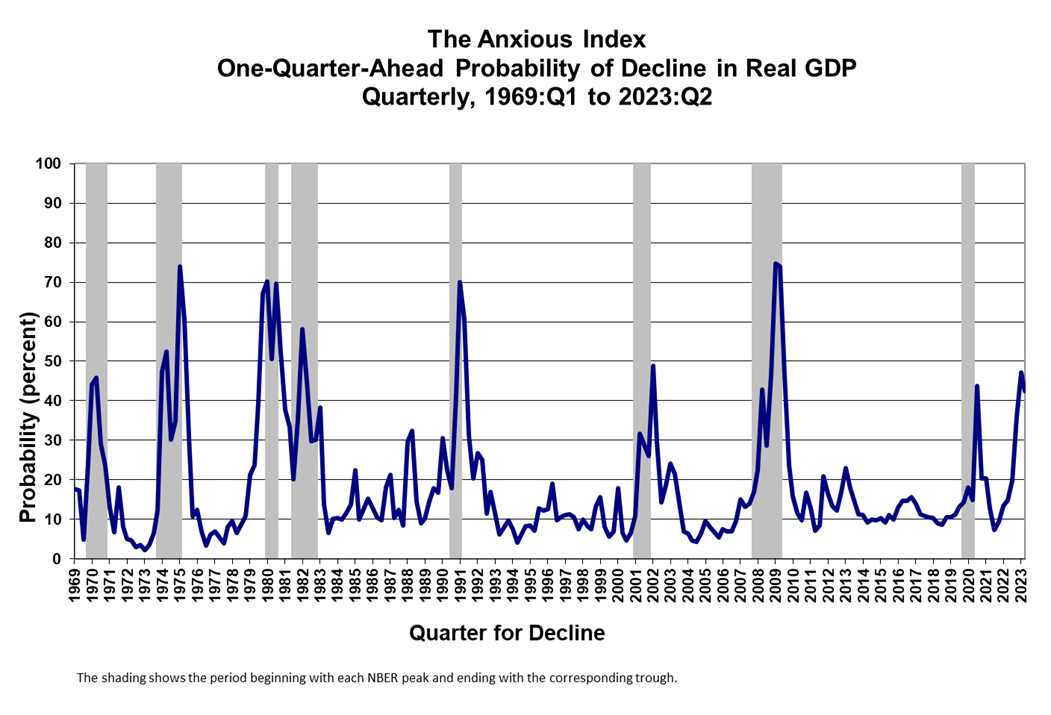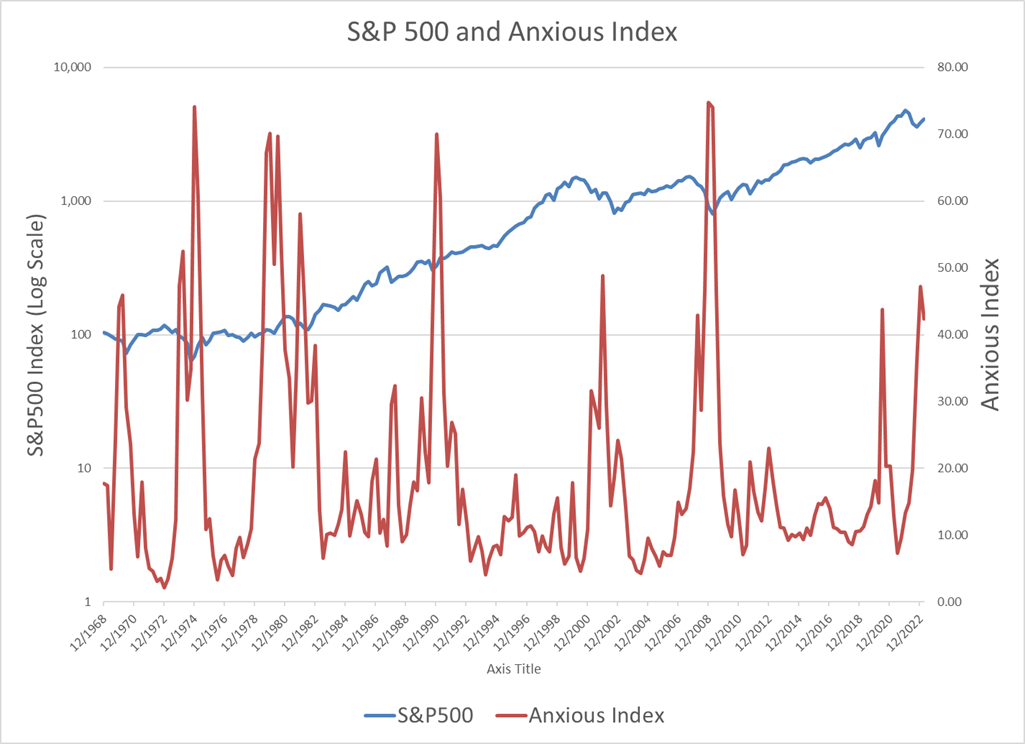Waiting nervously for the Anxious Index
The next update for the Anxious Index is due shortly. The Federal Reserve Bank of Philadelphia maintains a survey that asks professional economic forecasters about the probability of a negative GDP print for the following quarter. The survey commenced in 1969 and has seen eight recessions. How good are the estimates?
Overall, the average probability was 19%, which is too bearish when considering only 14% of quarters ended up recording a negative outcome over the history of the survey.
The forecasts would still be useful if they were elevated at the commencement of recessions, remained high whilst they persisted, and then dropped quickly when recessions ended. Here are the results:

Expectations are only slightly elevated, relative to long-term average, just ahead of the commencement of recessions. For the most part, forecasters have very little insight as to whether a recession is coming. Further, the estimated probabilities were highest for the quarter after recessions ended. Forecasters were most confident that recessions would continue when, in fact, they had ended. In between, they under-estimated the likelihood that recessions would persist. The insight is of limited value.
The following chart shows the full history of the series:

The only time forecasters successfully produced a significant early insight into an upcoming recession was in H2 1979, a period which was marked by rampant oil prices whose recessionary impact was clearly demonstrated only 5 years earlier. Fed Chair Volcker’s testimony at his confirmation hearing in July 1979 would also have informed the forecasts given a clear emphasis on taming inflation. Any lingering doubts would have been dispelled by the formal announcement of policy measures later in October. It was, perhaps, an easy forecast to get right back then. In contrast, the outlook from here isn’t quite as obvious but would deserve an elevated reading.
Finally, if we align the forecasts with the S&P500 index at the time, it is apparent that the points of maximum fear coincide with the points of better buying opportunities:

This is yet more evidence that market anxiety can be a source of opportunity for considered investors. The market generates cycles of anxiety even if these generally have very low predictive value for actual economic outcomes. Contrarian investors with resilient portfolios that can withstand drawdowns are structurally advantaged by such market features.

